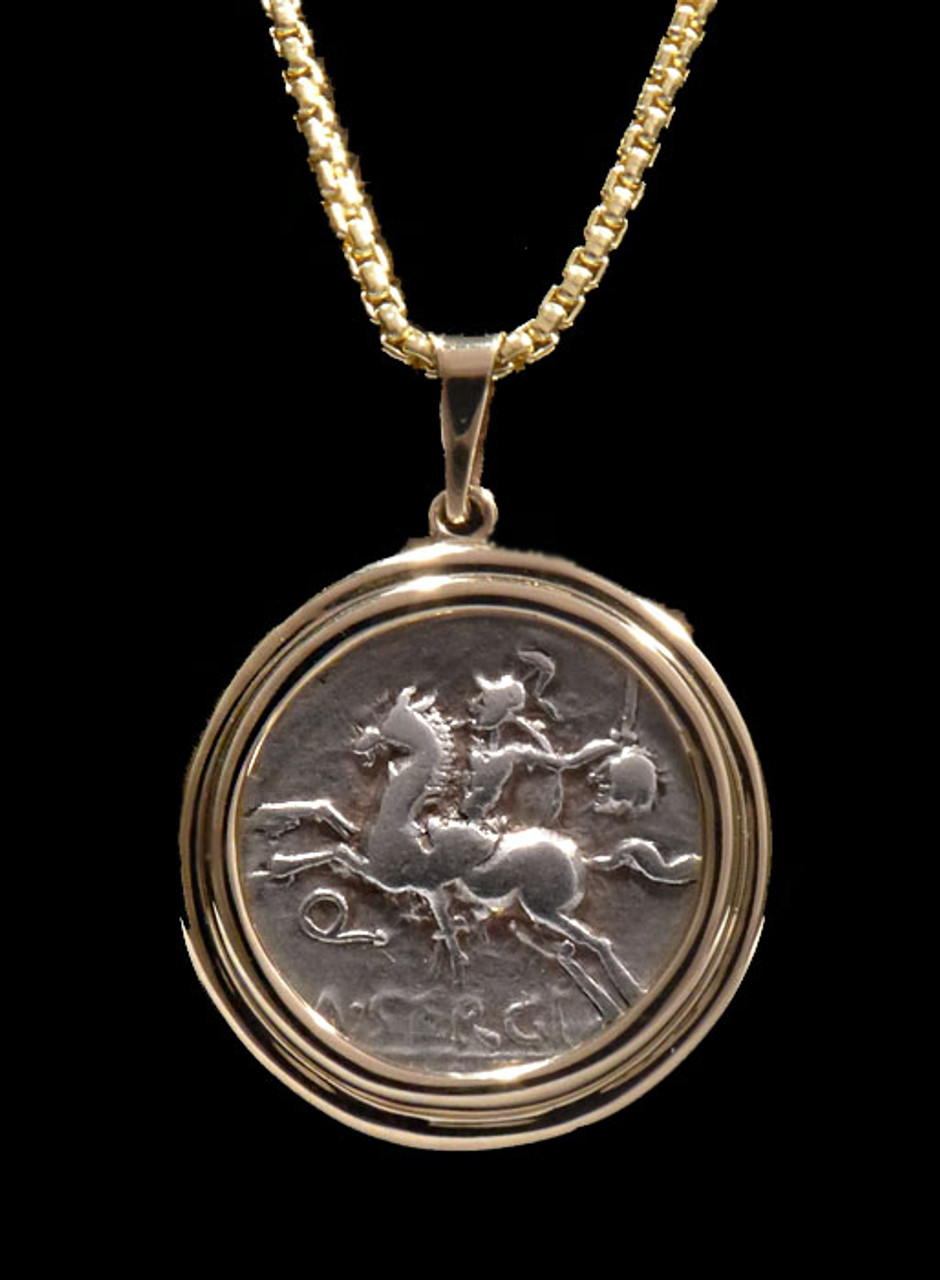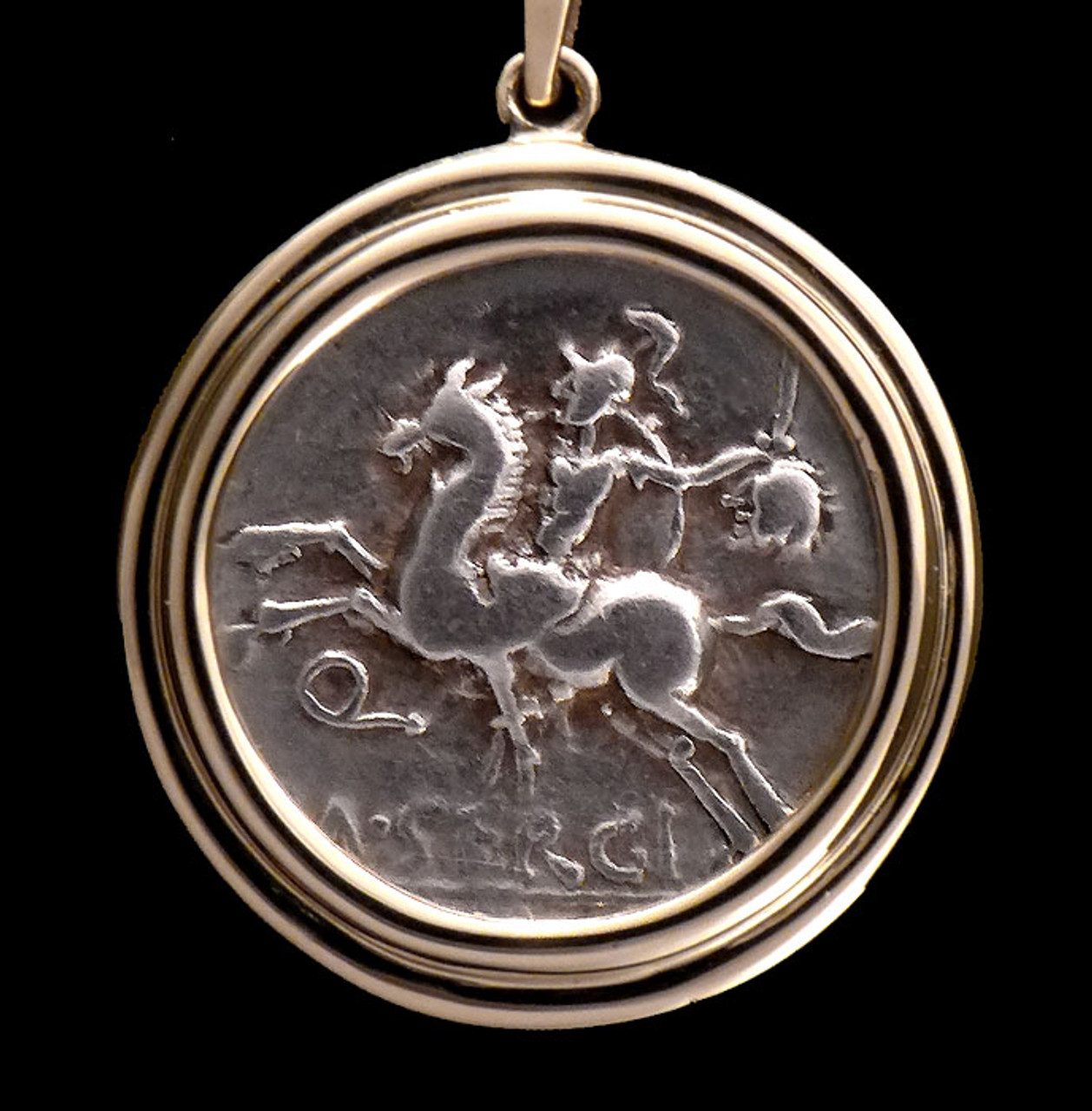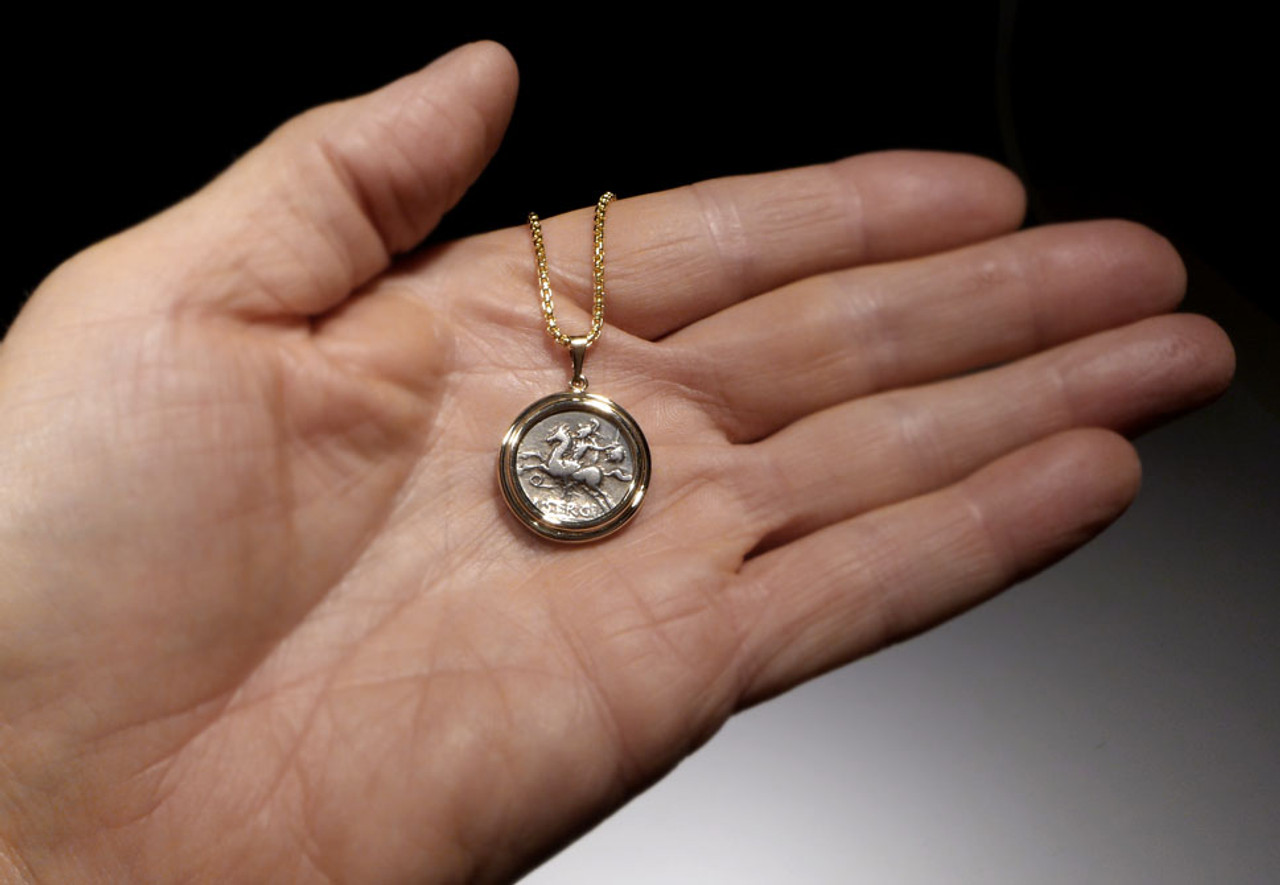Product Description
SETTING
|
14K YELLOW GOLD
|
COIN
|
SILVER DENARIUS
|
COIN AGE
|
116 - 115 B.C.
|
TOTAL SIZE
|
.95" diameter overall
|
|
INCLUDES GIFT BOX COMES WITH CERTIFICATE OF AUTHENTICITY / HISTORY SHEET |
|
DISPLAYED WITH A MEDIUM ROUND BOX CHAIN
This impeccably preserved genuine ancient Roman Republic silver denarius coin features a reverse image of a Roman mounted soldier, galloping with sword and holding up the decapitated head of a Celtic barbarian enemy. It is set in a cast, hand-made double bezel 14 karat yellow gold pendant setting that makes for a rich and classic display. On the reverse side, the helmeted bust of the patron god of Rome, ROMA, is shown in full battle dress. The art style of these early Roman Republic coins is perhaps, the most beautiful in all of Roman history. The magnificent depictions were directly influenced by the romantic art of the former Greek Empire that Rome assimilated. This coin is a splendid example of that art! The strike and subject matter is perfectly centered and well- struck. The top-grade condition of the coin has left much of the relief and detail intact after over 2000 years! The silver of the coin is richly contrasted by the warm 14K yellow gold setting that surrounds it.
This coin was minted by M. Sergius Silus (name inscribed on the reverse). The coin alludes to the bravery of his grandfather, of the same name, Marcus Sergius, a Roman general who distinguished himself during the second Punic War. Marcus Sergius was a Roman general during the Second Punic War (218 to 201 BC). He is the first documented user of a prosthetic hand. The iron hand was constructed to allow him to hold his shield in battle.
A description of Marcus Sergius is found in the seventh book of Pliny's Natural History, published in AD 77:
Nobody - at least in my opinion - can rightly rank any man above Marcus Sergius, although his great-grandson Catiline shames his name. In his second campaign Sergius lost his right hand. In two campaigns he was wounded twenty-three times, with the result that he had no use in either hand or either foot: only his spirit remained intact. Although disabled, Sergius served in many subsequent campaigns. He was twice captured by Hannibal - no ordinary foe- from whom twice he escaped, although kept in chains and shackles every day for twenty months. He fought four times with only his left hand, while two horses he was riding were stabbed beneath him.
He had a right hand made of iron for him and, going into battle with this bound to his arm, raised the siege of Cremona, saved Placentia and captured twelve enemy camps in Gaul - all of which exploits were confirmed by the speech he made as praetor when his colleagues tried to debar him as infirm from the sacrifices. What piles of wreaths he would have amassed in the face of a different enemy!
 US Dollars
US Dollars
 AUD
AUD
 CAD
CAD
 POUNDS STERLING
POUNDS STERLING










